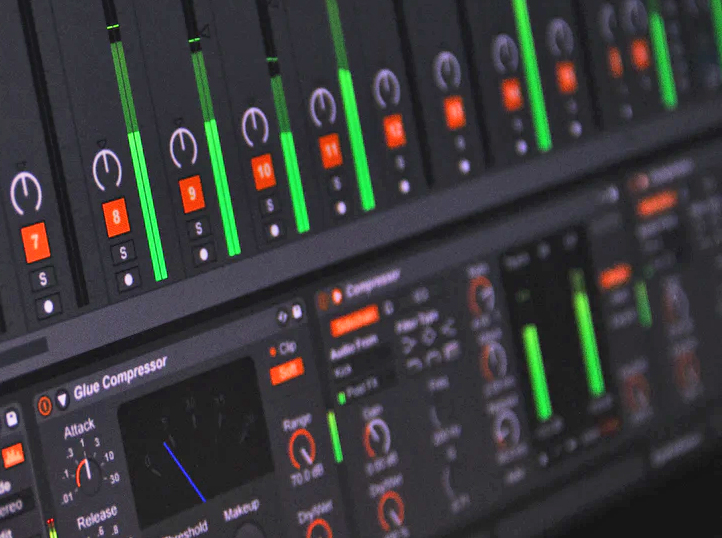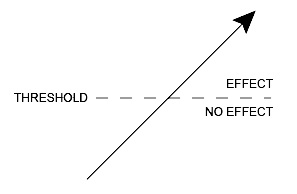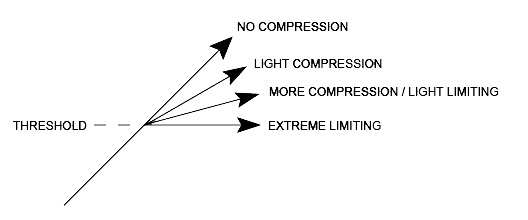In the world of recording there are numerous kinds of effects. However, often there are more terms and details specific to each device than the average engineer would care to learn before jumping in and using the new equipment.
Details are very important, though, and are critical to understanding the basic operation of all equipment. So let’s take a look at threshold based effects and make sure we all have a good understand of how they work and just what everything means.
Some effects are triggered when a sound volume passes a specific point called a threshold. A good example of a threshold based effect is a gate. A gate will mute a sound (stop it from playing) until the sound reaches a loud enough volume to reach the threshold. Then the gate will open and the sound will play.
Quiet sounds that are below the threshold will not trigger the gate to open and loud sounds that are at or higher than the threshold will trigger the gate to open and the sound to be heard.
This makes a gate very handy if you wanted to be able to hear important loud sounds and automatically mute quiet sounds that are not supposed to be heard, such as low background sounds or noises.
Some effects will become more extreme when the sound passes beyond the threshold and keeps getting louder.
For example a distortion effect that starts to sound dirty when a sound reaches a minimal threshold volume will get dirtier as the incoming sound gets louder.
Some effects use a ratio to set the amount of processing that happens once the threshold is passed.
For example, an effect used to control volume (a compressor / limiter) can be set to a ratio of 1:1 (no change past the threshold), a low ratio such as 2:1 (for every 2 dB of volume increase the compressor only allows 1dB of change), a heavier ratio such as 8:1 (for every 8 dB of volume increase the compressor only allows 1 dB of change) or a very heavy compression ratio (called limiting) such as 10:1.
You can even limit sound using a ratio of infinity : 1, which means that no matter how much louder the incoming sound gets beyond the threshold everything will be squeezed into only 1 dB of change.
Although usually the sound that is being processed in the effect is used to judge if the threshold is reached and the effect is triggered, it is possible to use an external trigger (called an external key) to trigger the effect.
Imagine a long sustaining vocal note that is being processed with a gate that is using an external key from a drum beat. The gate would open when the drum beat reached the threshold and the vocal note would be heard with the timing of the drum beat.
It is possible to use a side chain to trigger the threshold, which often involves using the original sound for the trigger, but processed. A typical example of this would be if you have a snare drum recording with leakage from the kick that you want to remove. The snare will be much brighter sounding than the kick, which will sound more like a thud.
If you used a gate on the track, but instead of just using the track from the trigger you first used an EQ to remove low thud parts of the sound and accentuate the bright parts, then the trigger will have more snare sound than kick and more easily hit the threshold only when the snare is playing but not the kick.
Another example is to use a compressor on a vocal to reduce how loud sounds get, but to trigger that compressor using an EQ’d sidechain that has all the low sounds removed so you can only hear the SSS of the vocal.
Such a sidechain would compress only when the sss sound is heard, which will created something called a de-esser which is used to control sibilance in vocal performances.
Threshold effects sometimes use attack, hold and release settings. Attack refers to the speed with which the effect will begin to work after the threshold is crossed.
Release refers to the speed with which the effect settings will return to the original setting if the trigger goes down below the threshold level.
Hold (also called sustain) refers to a time that passes between when the trigger drops below the threshold level and when the process starts to release.
























